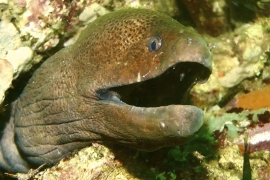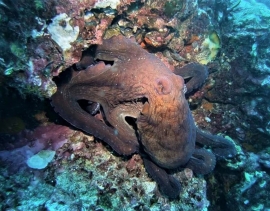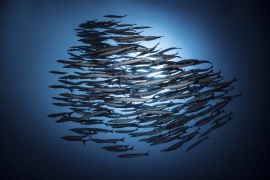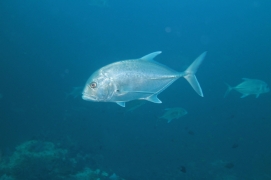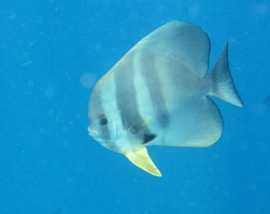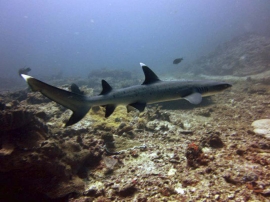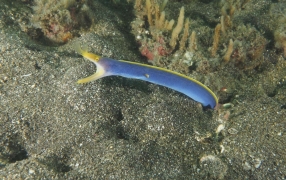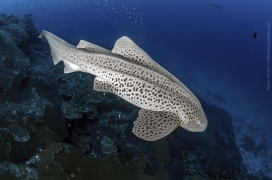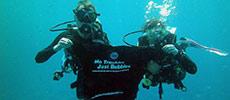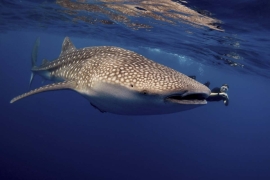
Lhaviyani Atoll Liveaboard Diving
Lhaviyani Atoll is among the best northern Maldives atolls for liveaboard scuba diving. Its large size and number of dive sites give liveaboard boat operators lots of choices and opportunity to choose the best dive site for each submersion. The atoll's official name is Faadhipplhu (Atoll/Atholhu), but like many Maldives atolls, most in the tourist industry call it by its coded name.
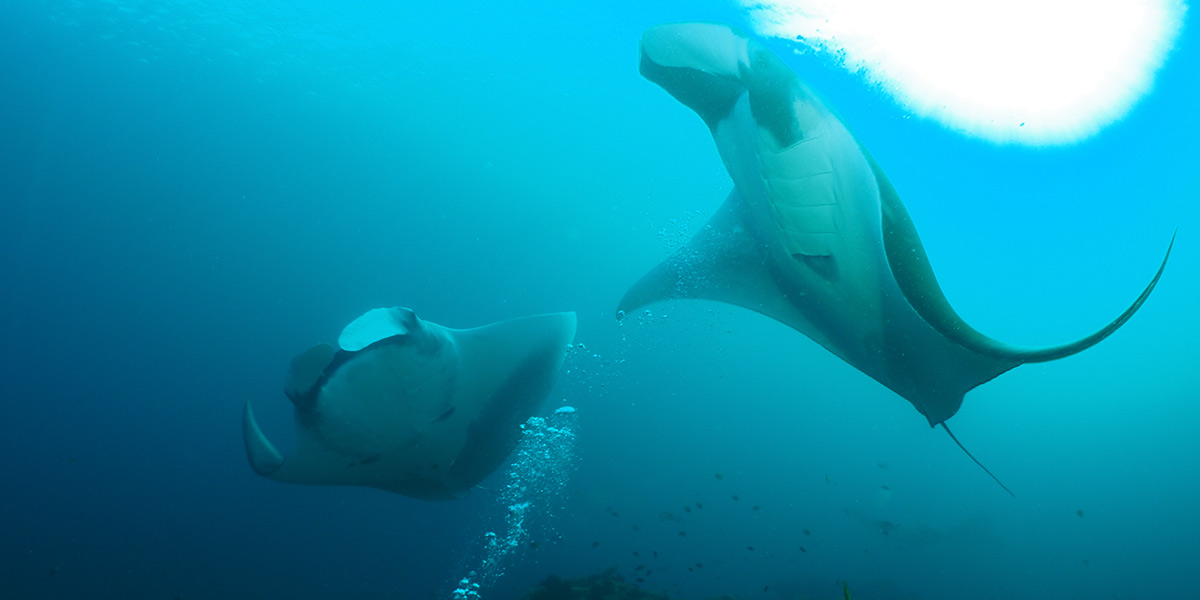
The natural atoll is made up of more than 50 islands, of which 90% are uninhabited. Lhaviyani Atoll is quite large, and in the shape of a horseshoe, with its open side facing southwest, towards the gap between the central and northern Maldives atolls. This may be why the channels on the southwest side are very wide, because of being exposed to more of The Indian Ocean. Inside the lagoon of horseshoe of Lhvaiyani Atoll, there are not as many thilas (submerged islands) as most other Maldives atolls, but the number of scuba dive sites is very high. At the moment, there are at least 50 dive sites, nearly all of which are located in the north. The northern tip of Lhaviyani Atoll is flanked by two sides which are southeasterly and southwesterly. Each side has islands, sandbars and deep, narrow channels (kandus), particularly on the western side. Here, the channels are more numerous and narrower, whereas on the eastern side the sandbars are longer, meaning fewer channels, but with slightly stronger currents because more water needs to get through each.
Possibly the most famous and exciting dive site for liveaboard diving at Lhavyani is Kuredu Express, which is known for its currents, but also for the wide variety of marine life there. It's located right on the northern tip of the atoll. This is a site for experienced scuba divers, with the opportunity to descend to 30 metres and see plenty of action all the way. This includes predatory sharks and rays.
Wreck diving is possible at Lhaviyani Atoll, with two wrecks next to each other at The Shipyard in the northeast. Skipjack 1 & 2 have been there since the 1980s and are popular wrecks for all levels of diver. Skipjack 1 sits upright, with its nose sticking out of the water. Skipjack 2 is deeper (28m) and lies on its side.
Kalifushifaru Corner is another interesting dive site. this one is a sloping reef from very shallow down to 30 metres. Like many natural Maldives dive sites, the channels are deep and have currents, and connect to the 'corners' which in turn connect to the outer reefs.
Depending on your scuba diver certification level, experience, and what you're after, there are lots of dive sites here, and something for everyone. Even if the water is deeper, most dives are limited to 30 metres. Inside the lagoon, the conditions are generally calmer and therefore easier for new or learning divers. Outer reefs can have little or no current at slack tide, but this picks up so you need to be aware and able to deal with it. The channels nearly always have current, but of course, this is what brings all the large fish and feeds the whole reef.
There are at least 50 discovered & named dive sites at Lhaviyani Atoll. Some locations have more than one name, and some names refer to more than one location. Among the most popular and exciting are the Kuredu Express and its sisters, Madivaru, Kalifushifaru, Felivaru Kandu, Kanuhura Corner & The Shipyard wrecks.
Dive sites at Lhaviyani Atoll
Conditions at Lhaviyani Atoll
When to dive at Lhaviyani Atoll
Diving all year is possible, but the better months are January to April. December & May are also good most years, but this is when the monsoons are changing. June to November is the southwest monsoon, which has more rain, rougher seas, and reduced visibility, but still good diving.
What type of dive site is Lhaviyani Atoll
There are 50 or more dive sites, which include reefs, walls, overhangs, wrecks, and more.
Where is Lhaviyani Atoll?
Lhaviyani Atoll is central-north, which means it's in the southern part of the northern atolls. North Male Atoll is 60 kilometres to the south, Noonu is just 14 kilometres to the north, and Baa 20 kilometres to the southwest.
How to get to Lhaviyani Atoll
The best way to visit Lhaviyani Atoll for diving is on a Maldives liveaboard safari. These trips depart from Male at the weekend and usually return to Male a week later, having visited several atolls.
Who can dive at Lhaviyani Atoll
All levels of diver can dive at Lhaviyani, but not at all of the fifty dive sites. Some of the dive sites are deeper or have currents, meaning they're more suitable Advanced & experienced divers.
What marine life can you see at Lhaviyani Atoll?
There's lots of exciting marine life to see at Lhaviyani Atoll, from small resident species to larger pelagic visitors. Diving with Manta Rays is something that many divers want to do in The Maldives, and this is possible here but never guaranteed. In the channels, you should look out for Eagle Rays and several large requiem shark species, especially when the currents are stronger.
Summary of Lhaviyani Atoll
Lhaviyani Atoll is one of the best northern Maldives atolls for scuba diving. There are 50 or more dive sites, and the atoll is quite large. Therefore, it's almost never crowded. Liveaboard operators choose the best times of each month to visit during the diving high season. There's a wide range of dive sites and something for everyone. Marine life is healthy, diverse & abundant. If you're able to join a Maldives diving liveaboard safari that includes Lhaviyani in its itinerary, you won't regret it!

